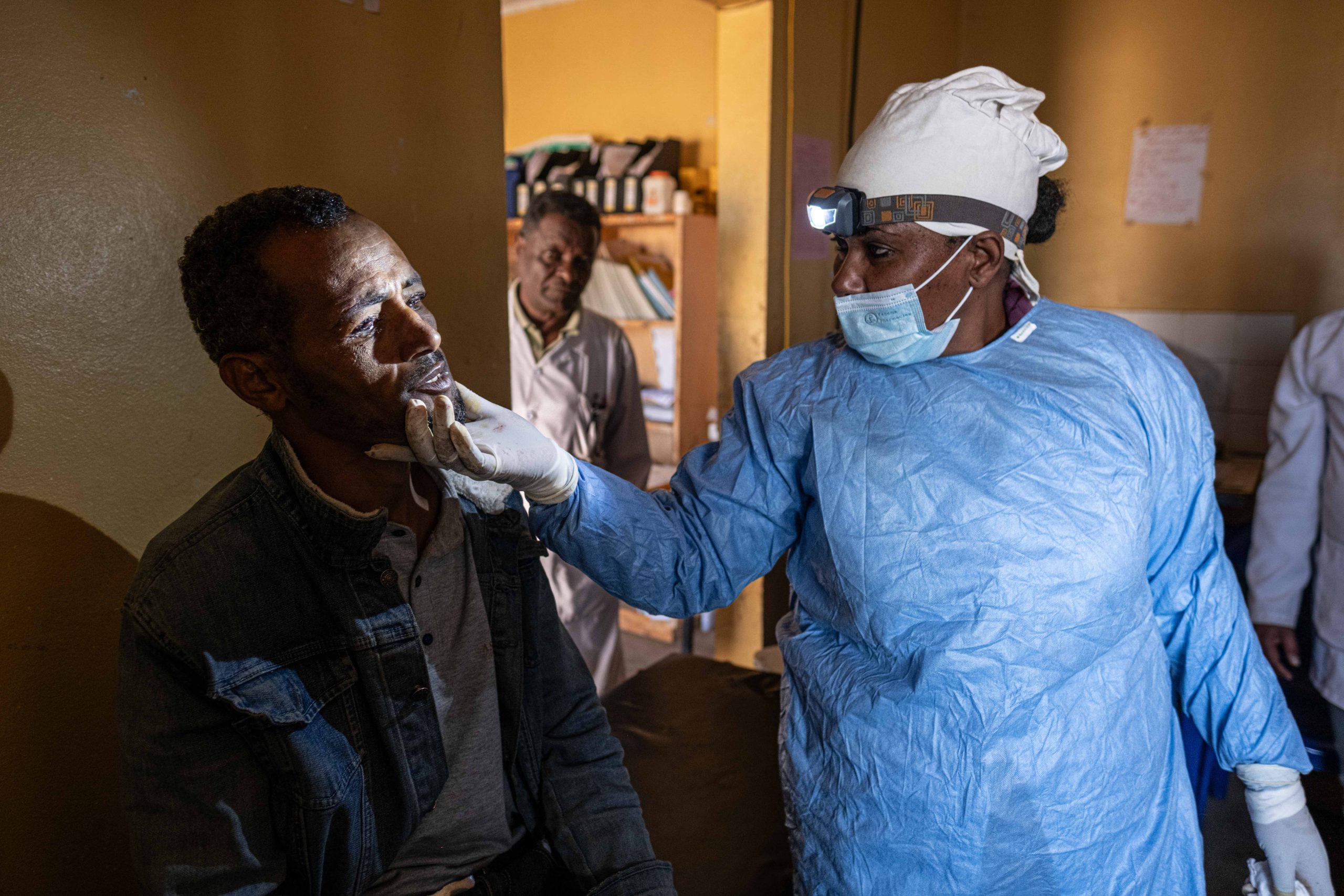Ethiopia 2025 – AFP
“For some time now, I have been unable to work in my field due to severe discomfort and pain. I constantly have to rely on others for help,” says Scheicho Scheifa, a 35-year-old farmer and baker. He blinks frequently, his reddened eyes filled with concern as he and his son gaze at two sacks of wheat from the previous harvest. Worried about his family’s future, he adds, “I’m afraid of going blind.”
In another village in the East Gurage Zone, Central Ethiopia, Tadelech Habtew, a woman living alone in a small house, struggles with isolation. Her vision is failing, and she is in constant pain. “I’ve been suffering on and off since childhood, but I only recently learned about this disease,” she says. For too long, she avoided seeking medical attention out of fear. “I was scared that surgery would make things worse.”
Both Scheicho and Tadelech suffer from trachoma, a tropical disease caused by infection with the bacterium Chlamydia trachomatis. It spreads through contact with the eyes or nose of infected individuals. If left untreated, the disease causes the eyelids to turn inward, making the eyelashes scrape against the cornea, leading to scarring and, ultimately, complete vision loss.
“After a long time, we were finally able to convince them to undergo surgery to save their eyesight,” says Gizachew Abebe, an ophthalmologist at Grarbet Tehadiso Hospital in Butajira, one of the few specialized centers dedicated to raising awareness and combating this disease.
“Trachoma remains highly contagious due to poor hygiene and limited access to clean water,” he explains. “Even a single fly carrying the infection from one eye to another can spread the disease.” To combat this, Gizachew and his team travel by ambulance to villages and marketplaces, using megaphones to encourage people to get tested and seek treatment.
“We are equipped to perform surgeries directly in small village health centers,” says Sister Yilma, another team member, as she prepares to perform a tarsotomy on Tadelech. “Patience and continuous reassurance are key to gaining people’s trust,” she emphasizes.
According to the World Health Organization (WHO), trachoma remains “hyperendemic in many of the world’s poorest and most rural areas,”. Around 103 million people worldwide live in endemic areas, with Ethiopia alone accounting for 52% of global trachoma cases.
“We must keep fighting,” Gizachew stresses. “The spread can be reduced, but true eradication is impossible without improved living conditions.”
























